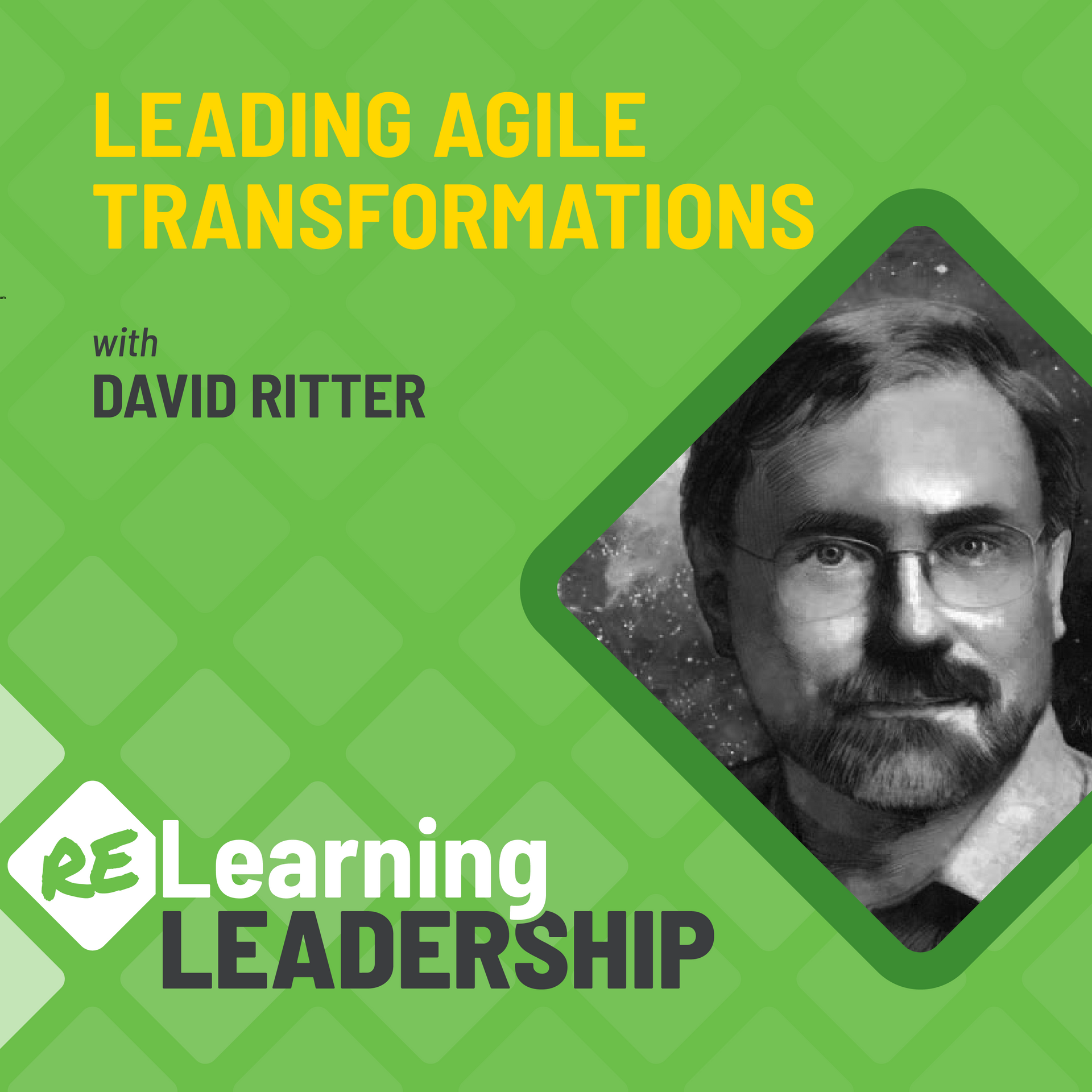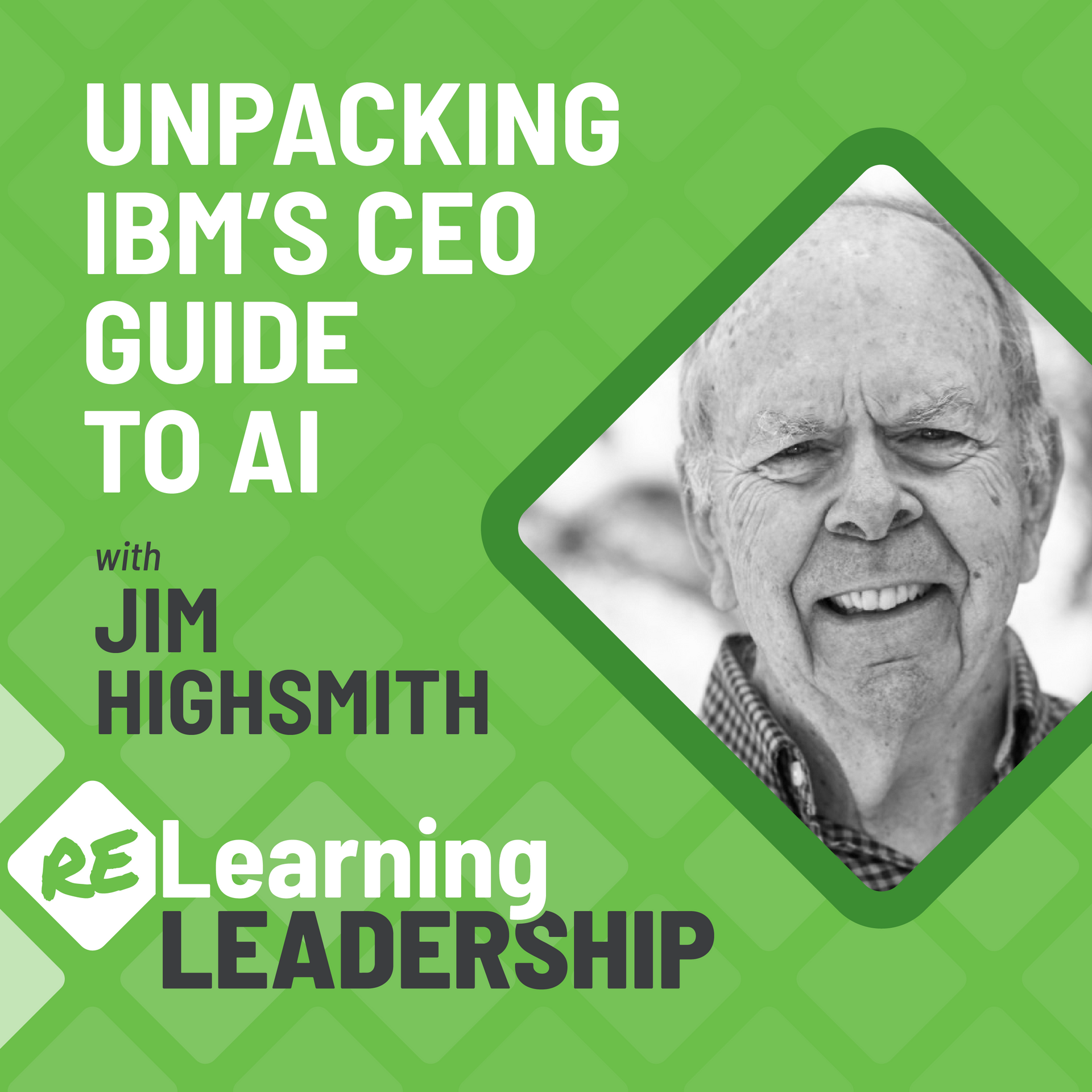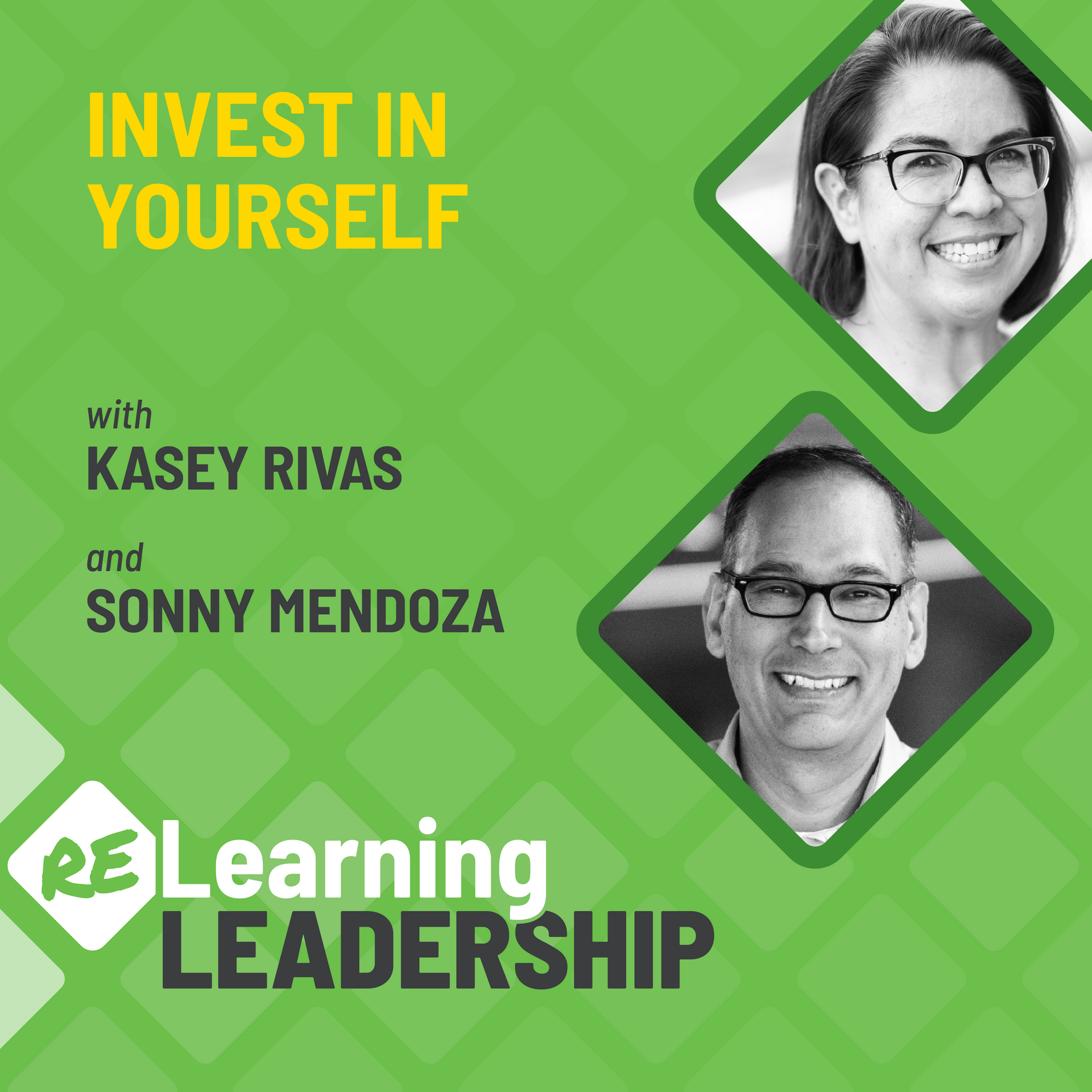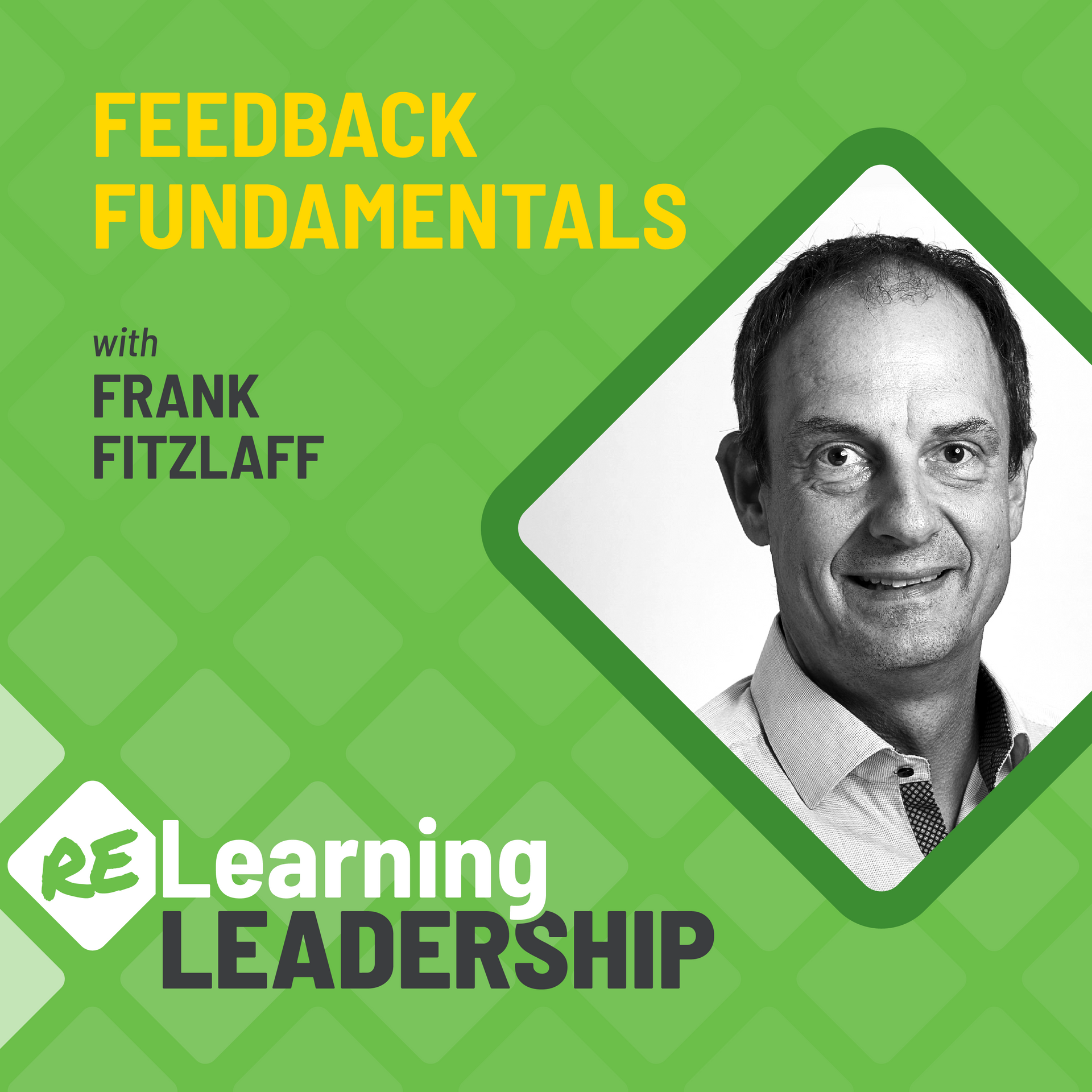58: Change Leadership: How to Set Up Your Transformation Team for Success
How can you set a transformation team up for success?
Dive into the change leadership with this episode of the Relearning Leadership podcast, featuring Alena Keck, head of Vodafone’s Lean-Agile Center of Excellence.
Discover the pivotal role of emotions in driving organizational change, the journey of transforming leadership mindsets, and the innovative strategies behind Vodafone's agile evolution. Keck, along with host Pete Behrens, discusses the complexities of leading change, nurturing a culture of agility, and fostering resilience amidst challenges.
Alena Keck, Head of the Lean-Agile Center of Excellence for Vodafone
Passionate about accelerating digital transformation with lean and agile principles at scale, Alena Keck is the Head of Lean-Agile Center of Excellence, driving and enabling Vodafone’s journey toward business agility across digital and IT. She has held previous roles in both Europe and the U.S. helping large global organizations overcome challenges on their agile transformation journey.
Alena began her agile journey at Daimler’s incubator known as Lab1886. Later on she was a strong catalyst of the Scaled Agile Transformation at the digital solution centre at Mercedes-Benz Financial Services USA, led lean-agile transformation in five locations in the U.S. and Mexico at Aptiv and was part of lean-agile centre of excellence at Porsche, connecting transformation to the digital strategy and implementing lean portfolio management.
Being a strong change agent, Alena thrives on creating strong transformation teams and growing lean-agile leaders who take an active role in removing transformation roadblocks and driving the change.
Connect with Alena on LinkedIn
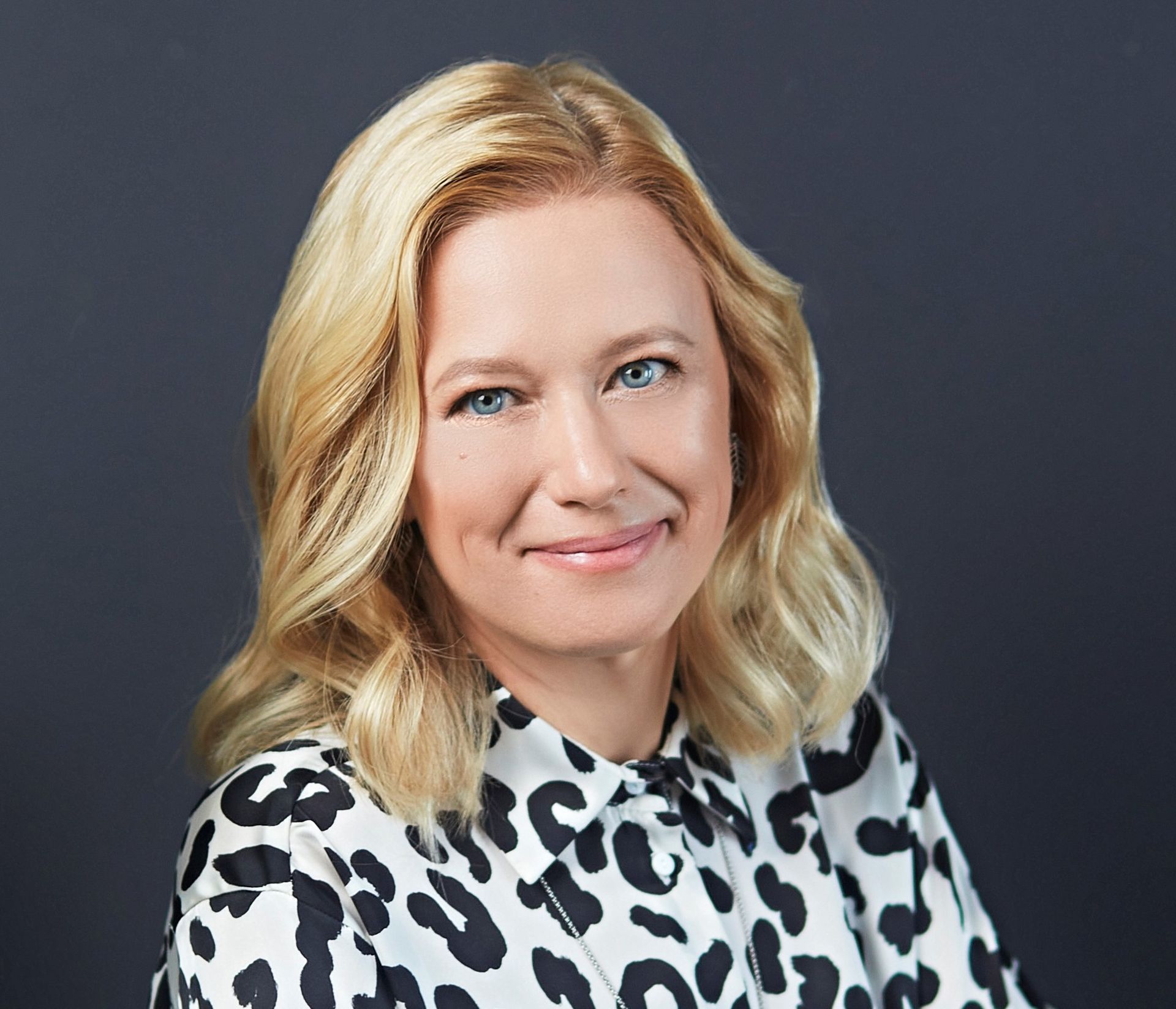
Relearning from this episode…
Emotional Intelligence in Change Management
Alena Keck emphasizes the crucial role of addressing the human and emotional aspects of change within organizations. She highlights the importance of understanding and navigating the emotional journey individuals and teams undergo during transformation, illustrating how resistance can be mitigated and acceptance fostered through empathy and emotional intelligence.
Leadership's Role in Agile Transformation
The discussion sheds light on the significant impact leadership has on the success of agile transformations. By educating leaders on agile principles and values and involving them actively in the change process, organizations can align transformation initiatives with broader business objectives, ensuring a more cohesive and supported transition to agile methodologies.
The Importance of Community and Persistence
Keck's insights reveal the power of creating a community of change agents within an organization to share challenges, successes, and best practices. She stresses that transformation is a team sport, requiring persistence, resilience, and a supportive network to overcome obstacles and sustain momentum in the face of setbacks.
Explore:
Related Episodes
49: Leading Agile Transformations
How should leaders approach agile transformations? In this episode of Relearning Leadership, Pete discusses the topic of agile transformations with Boston Consulting Group’s David Ritter.
David shares insights and expertise from his 40-year career, including the difficulties around implementing agile transformation at large organizations, the courage required of those organizations’ executives, and why it is so crucial to define goals and outcomes before applying agile practices.
26: Talking Transformation
What does it take to guide a multi-year transformation? Stemming from a proactive recognition from senior leadership, Amerisure Insurance has been on a 3-year culture-shaping journey to improve their speed of innovation. Amjed Al-Zoubi, CIO of Amerisure, and Pete co-presented this case study at the Business Agility Conference in NYC.
In this episode, Pete and Amjed went a little deeper and discussed more about the leader behind the title and about what it’s like to be on such a journey.
Recent Episodes
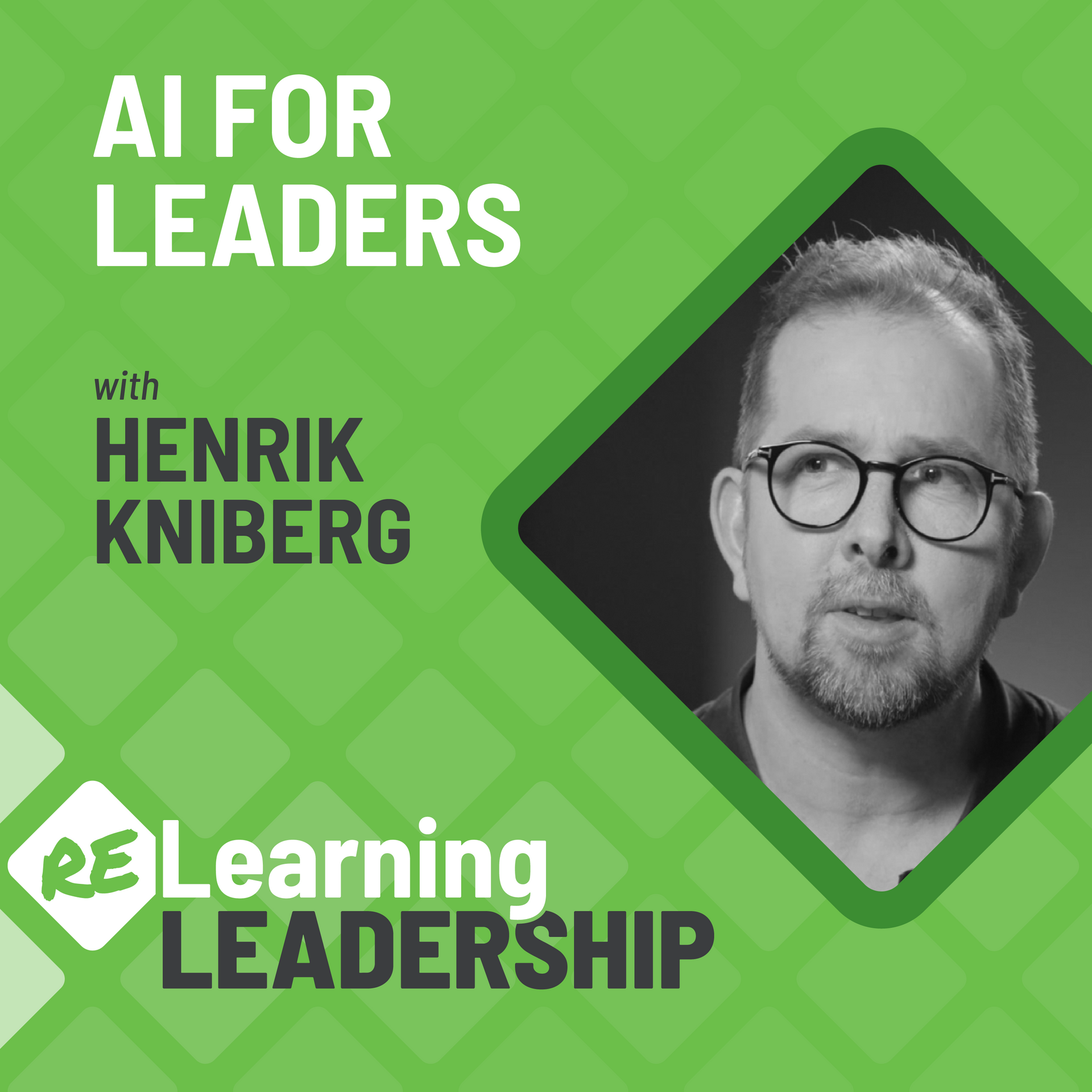
Episode Transcript
Pete Behrens:
What does it take to lead change in an organization? Welcome to another episode of
(Re)Learning Leadership, where we explore a specific leadership challenge and break it down to help improve your leadership, your organization, and, just possibly, your personal life. I'm Pete Behrens, and today I’m speaking with Alena Keck, the head of Vodafone’s Lean-Agile Center of Excellence. Alena is not only a change agent herself; she’s leading a team of teams of change agents. And, through our discussion, we explore the role of leader as change agent. Enjoy!
Welcome to the show, Alena!
Alena Keck:
Thank you, Pete, for inviting me! I'm really, really excited to be here and talk to you about some of the topics which are close to my heart. Thank you for the invitation.
Pete Behrens:
Yeah! Well, I think most people understand, you know, the role of an Agile Coach, or even the concept of, like, an Agile Center of Excellence, practice center. I'm curious, maybe, just from your specific context at Vodafone, what is it, and how do you define your role as that change agent? What is it you are primarily doing inside that organization?
Alena Keck:
I think—unofficially, I think the LACE team, or the Agile Center of Excellence, is like the source of energy—right?—for the transformation. It is an enabler and promoter of transformation, right? And help, really, first of all, to investigate a little bit on what are the impediments. A little bit of detective work. What are the resistors? What are the resistant factors? How can we shape the
why story?
How can we help to elevate the
why story, share the best practices, share the quick wins, and really help to generate positive energy, right? So, really, kind of, bringing the energy to the transformation to avoid this fatigue feeling and bring the joy of the transformation, right? So, this is how I would describe it without a job description. [Laughs]
Pete Behrens:
I love the human dynamics you're putting into that. The joy, the energy, the people side of that. I mean, we often think Agile is a process; it's a set of tools; it's Frameworks. It's—you know, it's an engine of working together. And I think what you're really describing is a much more human condition. Do you see that in your role and also in your team, that that is a focus?
Alena Keck:
I learned it, maybe, sometimes the hard way, right? Because as I started the journey, I was really very curious about this change curve, right? That every individual is going through denial, through, really, depression, maybe resistance. And then, eventually, with some help, the person is moving up, right? And if you are part of the Lean-Agile Center of Excellence, that you don't have one person. You have, like, hundreds of people or thousands of people. They are going through their emotional journey, and you realize that you can preach, you can teach, you can coach. But as long as they are in this denial phase—right?—if you do not address the human aspect and the emotions, there is no way you can come to them in a way that they accept whatever you're doing. Right? So you need to handle the change part and the change, emotional part in order for them to start even thinking and moving. Because, if you know the change curve, the only way you can start digesting is when you pass the first shock, when you pass the first denial phase, right? And if you are not helping the teams to go through it together, and with some positive emotions, then there is no way they would even accept any of your advice, any of your coaching, or any of their outcome, which you would like them to join and to help.
Pete Behrens:
Hm. Yeah, I mean, what you're describing—right? Every organization is a human system and, you know, to change the system, we've got to change the humans in that system, which—so you're describing a—you know, I would call that the
J-curve effect, right? You have that little–the dip of, maybe, productivity, and even describing denial and delusion, or some aspect of resistance. What is it you see they're resisting? What—is it just change in general, or is it a specific type of change? Is it the fact that they're not responsible and empowered on that change? What is it you see, primarily, as that push-back?
Alena Keck:
There are a lot of things. So, I think, on the one side, it's this business with running the business, versus growing the business, right? So people are already so busy, overwhelmed, sometimes overworked, and really heads down, just doing, doing, doing, right? And if you're coming with those great ideas and how everything will change and everything will be better, they are thinking, “Okay, wow! We will need to do even more, and we will need to work even more to manage this transition and to come to this transition.” So, how can we do it at all if we are already working, maybe, over 100%, right? So, maybe being overwhelmed by the fact that in order to get the results—right?—and go through this curve, you need to lose this productivity for some time, and you need to maybe redesign your skill set. And maybe the skills which you were so proud of and you developed for many years are now less in demand. Maybe your role is not in an Agile chart, right? So there are a lot of things people are really worried when they don't see—like, for example, project managers, right? They don't see themselves on the chart, right? They don't see—“What is my neuro? What am I supposed to do?”
Right? “Where am I here?”
Right? Or the managers, right? So, a lot of people do not see exactly, explicitly, their icon, right? So, what am I doing right now? How am I connected? And if you do not really address—or even collect—all those emotions and all those potential resisting factors, right? You would not be able to reach the results, right? So these are just some of the potential resisting factors, right? Sometimes the leadership team is not supporting. So, I would not say there is one. There are really a lot of them.
Pete Behrens:
Yeah. I mean, the one you really, I think, hit on first, which we see a lot—right? It's the,
“I'm here to deliver value. I'm here, and I've got a lot of pressure on these projects and these things that I'm doing.”
Whether that's operationally or creatively, you know, new things. And to change the system at the same time I'm trying to deliver in that system, it feels—like you say, there's not enough time right to do both. And, in a sense, what you're saying is—your organization is there to kind of help that organization see both, right? That we've got to fix the system we're working in to make that system better. Is that a fair way to say, kind of, what you're helping them with?
Alena Keck:
A lot of time, the expectation of the higher leadership is that you will be running the car on a highway and changing the wheels at the same time, right? Which—sometimes we need to protect the teams, right?—and really set more realistic expectations, right? And say transformation is not ending after three months, right? Not even after six months, right? So, it is nothing which you can just check the box and do some setting expectations, setting the stage, saying that it will take a while, that we will need time, we will need to upscale, the teams, right? And creating this road map of, maybe, gradual change, rather than, maybe, a sudden change. These are some of the things we are trying out.
Pete Behrens:
Yeah. Well, you know, I know Vodafone works in a very difficult industry, right? The telecom space is very competitive, right? The telecom space has unreal expectations of reliability and, you know, uptime—right?—in terms of the operational side of that business. What is it—do you work in just part of that system, where you're focused a little bit more on the creative and new product development, delivery side, or is this really something that you're seeing, kind of, across the spectrum of the business, in terms of both, you know, the runtime side as well as the creative, new development, side.
Alena Keck:
So, we have different transformation initiatives within Vodafone, which started many years ago in different areas. And some of them is what—to describe the networks area, right? Some is, for example, in different markets or consumer and business area, right? Addressing different customers. So it is going on in all the multiple areas which you were referring to, including the networks. It has different speed; it has different focus.
But what we did two years ago? We brought it all together into one community of change agents, which we call Enterprise Center of Excellence or Enterprise Lean-Agile Center of Excellence, where the change leaders from networks, from Vodafone business, from the consumer site from Vodafone learning organization, from our biggest markets, like Germany—they come together and really discuss the common challenges, discuss their approaches, share the best practices, and focus on topics which are relevant for all of them, right? So we bring them together for alignment, sharing and bringing the ideas together. So, it's not only in their innovation lab, right? We also do hackathons and all of that. But the transformation is not limited to a playground—right?—of innovation labs.
Pete Behrens:
Yeah, yeah. That's good—that's great to hear. And I love what you're saying there, right? Looks different in each one of those spaces, right? Change, the needs, the—whether it's more Lean or Agile or, you know, how we're improving those systems. Would you say—you know, one of the things we’re seeing—we're seeing some trends in the industry around the word
agile—you know, is in some ways becoming antithesis, right? I think there's been some negativity. Like, okay, it hasn't necessarily improved in all cases. In other cases, we're seeing, kind of, that role of Agile coach diminished, in terms of the specific role and position in an organization, versus the skills are getting distributed across different parts of the system and others in the organization. I'm curious—are you seeing your Agile Center of Excellence change, or what changes are you seeing in terms of Agile itself, or just the way you're approaching some of these changes?
Alena Keck:
Yeah. I think it is changing, right? And as I'm also leading a team of coaches, I'm of course responsible for their future and responsible that we are staying relevant, not only today but also tomorrow. So, I'm also observing the trends. And it is interesting, what you describe. On the one side, if I Google the market size of Agile transformation, how it is in this year compared to 2032? It's telling me whatever reports I'm reading. It will grow, like, five times, right? So, it will be growing really, really in a more-than-100 million dollar business, right? And now it's like a 70 million dollar business, right? And on the other side, if I read what you are saying, for example, from the Business Agility Institute Report about the skills and all of that–and I'm getting a different picture, and it's not connecting for me, right? So I'm trying to interpret it.
So, what I'm observing, or what we are trying to do as a team—right now we are upscaling ourselves for innovation coaching. So, we will be supporting the first global hackathon for Vodafone, right? And our coaches are now really actively upscaled. And what does it take to help the team to develop a good MVP? That it's viable, feasible, how to coach, for example, to create a great pitch presentation for our internal investors and all of that, right? So we're trying to upscale ourselves in different areas, in addition to Agile coaching, right? And reach our skills in innovation coaching. What we are also doing is trying to see what kind of future services we need to offer. Maybe it's upscaling for a specific role rather than roll out, right? Or maybe it's even mentoring, or programs where we upscale the scrum masters or Agile coaches. So, it should be very flexible. I do observe that Agile coach role and, specifically, do we need scrum master and coach, or only scrum master? Or, do we just need the scrum master? So all of this discussion, of course, are going on, right?
Pete Behrens:
Well, yeah. And, you know, what we're seeing is as you describe, right? The individual, the skill set, is highly needed. The fact that it's a specific role—I think you're right—is changing. I also look at it as, I mean—the role of coach is meant to be transient, right? The role of coach is to develop some kind of a system that's hopefully somewhat self-enabling. So, to me, the concept of coaches feeling like,
“Oh, I'm getting left behind.” It's, like, well, that's part of your job—is to upscale and then move on. So, I think that's actually a good thing. I think that's a positive thing. I'm curious—one of the things we see a lot in these larger organizations is the, maybe, the conflict or the intersection between the leaders in the organization. Those who have defined power—right?—in terms of division, department, head of, you know, these types of titles that are in charge of some part of the system. And the coaches and transformation agents who are coming in to tweak that system. I'm curious if you would share with us, maybe, a little bit of the conflict or the challenges you might see between those roles trying to work together?
Alena Keck:
Yeah. I think you are describing a reality, right? There is, of course, natural friction, right? Because, a lot of times, the biggest change in the whole system is not from the team; it's actually for leadership and management roles, right? Therefore, they perceive that Agile coaches are focused on the teams. And everything is working for the teams. But, actually, they need to have a much bigger say—and being much more engaged and be part of the transformation. So, what we are trying to do are different things. On the one side, educating the leaders—right?—and bringing them their, at least, the knowledge, their understanding of Agile principles and values and what you call the catalyst leader, catalyst conversations, right?
On the other side, when we start the initiative—right?—transformation initiative in an area, we start with getting an executive sponsor for that, right? And really seeing—okay, what would be the bigger objective, bigger vision? Where do we see this part of the organization evolving? What could be some business goal to connect to? And we are also also trying to connect—like, our team is part of the technology organization, part of our CTO organization. So, we are connected to the CTO objectives—right?—or to the CTO strategy and try to derive the work we do from the bigger objectives on the strategy part. And working—for example, if we get an executive sponsor for one initiative, we try, for this person, to nominate people of trust who we can work with and also agree on the scope and agree what would be important, what will we do in the next quarter, what would we do in the upcoming month, together. And all the time saying we are enabler. We are helping facilitate the change. We can do, on the ground, job and also fulfilling some of the roles. But the transformation ownership and the success—it needs to come from the delivery organization, right? It needs to come from leaders. Kind of, trying to set this expectation—it is a longer journey to make this expectation. It's like planting the seed, right? But it's a very long-growing tree—right?—which takes a lot of years to grow. But we're trying to, at least, all the time, setting the expectation, right? Okay, we're enabling, but we still need you in the driver's seat. We need to come back to you, for example, to assign business value to what we did, right? Or to define the acceptance criteria for what we need to do, right? So, not to do it in isolation from them.
Pete Behrens:
Yeah. You know, I think you're describing exactly why Agile Leadership Journey formed, right? Leaders tend to trump everything else, right? So, whatever we bring into a system—if there's not a growth mindset-oriented executive sponsor or leader in that system, it's not going to go anywhere. And I think what you're describing is exactly that. Unless we're able to educate, inspire, catalyze leaders to take a journey on their own, the rest of that part of that system most likely won't be coming along for the ride.
Alena Keck:
Yeah. Or sometimes, if it starts and there is an re-org in a different—like, it all falls apart, right? It is really—it has such an influence, right? You just grow this tree, and then there is an re-org, and a different leader comes to something which was already existing. And it really starts falling apart.
Pete Behrens:
Job security, I think, yeah! [Laughs] Maybe, to dive into that a little bit more, you know—I see the outside view of training, educating, coaching leaders. You're seeing the inside view. Are you seeing an acceptance there? I know we do a lot of—you know, we've got some of our
internal, you know, guides inside your system. And there's some education. We don't always get a peek into that window. I'm curious what you're seeing, or if you could describe any kind of, like, success, where you've seen some leaders go through that, kind of,
Aha!, into something different or new. Just give us a little bit of insight of what that might look like on the inside.
Alena Keck:
So, we have, right now, a very great leader who came from part of the organization, from Vodafone, Vodacom. And who experienced the benefits of agility and experienced what can happen if the teams are crossing the silos,
breaking the silos, work together and deliver value and focusing on delivering value. So, he's bringing this fresh perspective and really convincing his whole leadership team right now to really drive this transformation in different initiatives within his organization. So, he's really trying.
“Okay, let's try in this area—right?—let's do a retrospective. Why is it not working yet? What can we improve?”
So, he's trying to push for improvement. “Okay, it did not work the first time. Like, let's do the next one. What can we improve?” And he's not giving up, right? And it really sets the stage and gives the positive energy we need, right? Because normally, in the first part of the transformation, you'll just surface the impediment, right? And you start to boil them in order to address them, but you cannot just skip them and start growing, right? So, the hardest part is really to stay on top of those boiling impediments. Boiling, for example, bottlenecks and start addressing them one-by-one and not giving up. So he's, for example, really bringing a good discipline and good energy for his whole leadership team to do exactly that.
Pete Behrens:
Yeah. You're describing a catalyst, right? Catalyzing other leaders, catalyzing the system, being a visionary as well as an agitator, I think, in that system. You know, I know Vodafone is defined—or, you know—I think, from a framework perspective, you're considered a scaled Agile framework, you know? You're using that system, but yet it sounds like everything that I'm hearing from your organization is things around that framework. And I'm curious about that, in terms of—what do you see? Like, the framework itself? You know, we say frameworks are helpful but not necessarily—they're necessary but not sufficient. And I'm curious—what is the—your organization, Center of Excellence, doing to complement—besides the leadership education, are there other things you're doing to complement that, to help really improve that system of delivery?
Alena Keck:
So, I think the framework helps to develop one language so that you do not, all the time, lose time for translation. What does an Agile coach mean, right? What does a team of teams mean, right? So, it really helps to create common language and really focus on helping the transformation, rather than all the time translating. What we also do is, of course, working on the same
why story, vision, right? Or working on the same impediment removal, right? Whether it's finance—we need to adjust the finance processes, or we need to work together with HRs and roles. These are the things which are independent from the framework, but we need to address them as a transformation team to help to transform and grow the transformation. But at the same time, we also need to help establish the same language and really calm down and not start fighting across frameworks, or use different methods—and not being completely comparable. And really running in different directions, even, in terms of tooling. If you want to have—in a large organization, if you want to measure time to market, good luck! Because every team, especially if you have a lot of pockets of transformation, or a lot of pockets of funding—every team uses a different tool, has different artifacts. And if you want, like, an end-to-end time to market, you need to start, maybe, with some common artifacts. Even common instances for some tooling to enable teams, at least, to measure that we are not sitting, staying still, but we are, for example, reducing the time to market and shrinking the time to market. All this enablement needs to be done by those change agents. Because this is something which will never happen automatically.
Pete Behrens:
So, you're talking about a lot of, kind of, success metrics there. I'm curious—how is your Agile Center of Excellence measured? How do you know you're making a difference. Or, what does success mean to your organization in a quarter, in a year, that time frame?
Alena Keck:
This year, we started to experiment with OKRs, right? So we said,
“Okay, what could be three or four objectives which we want to, yeah, deliver as a team within the one year horizon? And how can we contribute it with our quarterly objectives or our PI objectives?”
For example, we want to roll out the satisfaction survey for our transformation stakeholders, right? So we will be rolling out an MVP of a satisfaction survey to get the feedback from them and so that they can measure our success and provide us a regular feedback loop.
We are measuring the training net promoter score. So, in every training, at the end of the training, we are asking whether they would recommend our training team to their colleagues, right? Because training creates the pipeline, maybe, for future transformation, for future initiatives, which we can support. So it's kind of our pipeline. So, a lot of—we use a lot of leading indicators. Because if you want, as I mentioned, to measure time to market and to improve time to market, it will take two or three years. And I cannot show the dashboard which is not moving for maybe one year, right? And then it will move a little bit, and then it will move a lot, right? It would be very hard!
Vodafone as a company has a very strong employee satisfaction survey. So, we have spirit of Vodafone, and we have surveys which are conducted on a regular basis which measure culture and measure cultural change. And the results of the survey really strongly impact the leaders and leaders’ behavior. They are taken seriously. So, in terms of employee satisfaction and employee engagement, this is something which we relate to. But it is already measured on Vodafone-level. And what we try to connect it, to do it on a team of teams level, right? Either—not just looking at big areas, but to see, okay, in the areas where we transform, can we use the same three questions—right?—to measure some cultural element on a team of teams level or Agile level.
Pete Behrens:
Sounds like you have a fairly comprehensive set of success metrics there from people to process to leading and lagging and—yeah, so appreciate your thoroughness through that process. You know, you mentioned, as we talked about being on the podcast, that you wanted to be a helper for other internal change agents. And I'm curious about that. What is it you see or would like to help them with? What is it—what advice, or what—yeah, what is it you'd like to tell them that might help their journey?
Alena Keck:
So, I think the biggest advice I would give them—as I started that—for me, change agent is a source of energy, right? So, the change agent needs to keep their energy high, right? They cannot really—they cannot get out of breath, right? Because if they are not motivated, and if they are not convinced about the transformation, or if they are very upset after every setback—so, setbacks are normal, right? Impediments are normal. We need to, kind of, live with them—and not being all the time upset about them, right? You need to help yourself to get this positive energy. Because if, as a change agent, you lose it, you will not be able to help the organization, right? So, just take their impediments in a way that motivates you to innovate to solve them, rather than really take it as a ceiling you cannot cross it all, right? And really embrace yourself with the environment of change agents who can keep you positive when things are getting hard, right? Because, normally, you will never have, like, this
Aha! moment from the others. You need to have this change agent team or—because transformation is a team sport—who can help you when you're struggling, when you have difficult moments. Who can really uplift you so that you can uplift the organization.
Pete Behrens:
Yeah. I think, you know, what you describe I see so much in organizations, right? They feel so isolated. Different departments, divisions—they don't learn from each other. And it's great to see you building a community internally for those change agents to have a support system. We do that externally for change agents working with organizations such as yours. But, yeah, it's such a critical aspect of that change agent role—is to not get isolated too much. And it can become overwhelming and challenging, I can see.
Alena Keck:
Yeah. I would say that my message for 2024 is that giving up is not an option. You need to keep going; you need to keep learning from your transformation mistakes, from your transformation successes. Create a guiding coalition. Put the transformation as a transformation sport in your mantra. And help the organization to overcome the challenges and not give up.
Pete Behrens:
Don't give up, yes. Yeah. Especially when those hurdles—you run into those hurdles, as you described, right? It's the persistence, the courage to overcome, yeah. And that takes a lot of patience.
It's been a pleasure chatting with you today. And, you know, I look forward to seeing your continued story—and Vodafone's continued story—down this journey and look forward to seeing some positive results come from that.
Alena Keck:
Thank you, Pete! And it was really great talking to you.
Pete Behrens:
(Re)Learning Leadership is the official podcast of the Agile Leadership Journey. Together, we build better leaders. It’s hosted by me, Pete Behrens, with contributions from our global Guide community. It’s produced by Ryan Dugan. With music by Joy Zimmerman. If you enjoyed this episode, please subscribe, leave us a review, or share a comment. And visit our website,
agileleadershipjourney.com/podcast, for guest profiles, episode references, transcripts, and to explore more about your own leadership journey.

